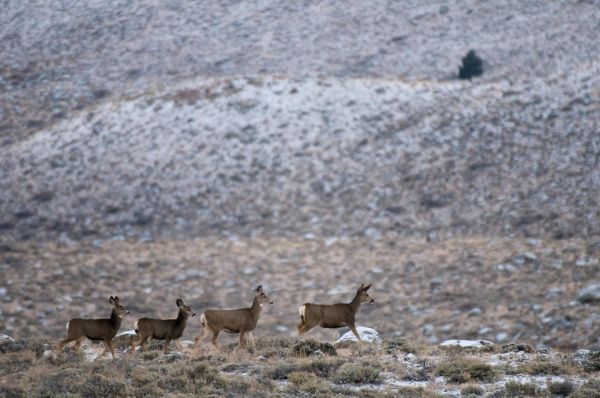How do big-game animals know where to migrate across hundreds of miles of vast Wyoming landscapes year after year?
Among scientists, there are two camps of thought. First is that animals use local cues within their vicinity to determine where to migrate. Animals might move up to areas with greener forage -- often termed green-wave surfing -- or move down from mountains with deeper snow. The second idea is that animals develop memory of the landscape where they live and then use that information to guide their movements.
Recent research from the University of Wyoming has found that memory explains much of deer behavior during migration: Mule deer navigate in spring and fall mostly by using their knowledge of past migration routes and seasonal ranges.
The study found that the location of past years’ migratory route and summer range had 2-28 times more influence on a deer’s choice of a migration path than environmental factors such as tracking spring green-up, autumn snow depth or topography.
Read more at University of Wyoming
Photo: Mule deer move across a sagebrush-covered basin in western Wyoming. New UW research shows that deer navigate in spring and fall mostly by using their knowledge of past migration routes and seasonal ranges. (Joe Riis Photo)


